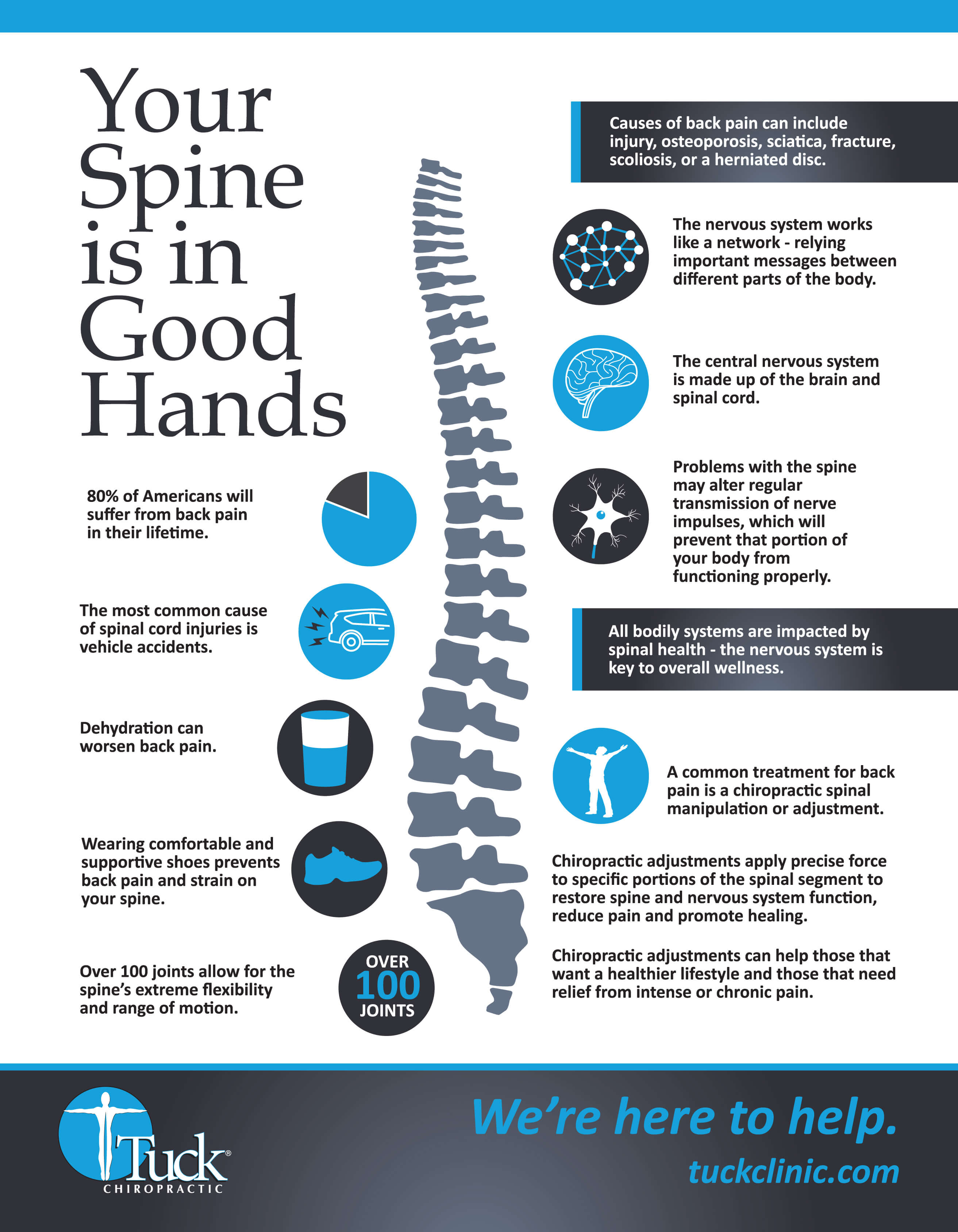The Result Of Stance On Neck And Back Pain: Standards For Maintaining Great Positioning Throughout Your Daily Routine
The Result Of Stance On Neck And Back Pain: Standards For Maintaining Great Positioning Throughout Your Daily Routine
Blog Article
Short Article Composed By-Fletcher Bennett
Maintaining appropriate pose isn't just about staying up straight; it's about aligning your body in a manner that supports your spinal column and minimizes the threat of neck and back pain. The method you sit, stand, and move throughout the day can considerably affect your spinal wellness. Yet how specifically can you make sure excellent positioning regularly, even during busy days filled with various tasks? Let's dive deeper right into the refined yet impactful adjustments you can make to your day-to-day regimen to keep your back happy and healthy and balanced.
Significance of Proper Position
Correct stance is essential in maintaining a healthy and balanced back and stopping pain. When you rest or stand with great pose, your spinal column remains in alignment, minimizing stress on your muscle mass, tendons, and joints. This alignment allows the body to disperse weight uniformly, avoiding too much stress on specific areas that can bring about pain and pain. By maintaining your spine effectively straightened, you can also improve your breathing and food digestion, as slouching can compress body organs and limit their performance.
Moreover, keeping great stance can improve your general look and self-esteem. When medicaid chiropractor nyc stand tall with your shoulders back and head held high, you emanate self-confidence and appear even more friendly. Great stance can also make you feel much more stimulated and sharp, as it promotes correct blood circulation and enables your muscular tissues to work efficiently.
Integrating proper position right into your daily regimen, whether resting at a desk, strolling, or working out, is important for stopping pain in the back and advertising total well-being. Keep in mind, a little modification in how you hold on your own can make a significant difference in exactly how you really feel and work throughout the day.
Common Postural Mistakes
When it comes to maintaining good posture, many individuals unknowingly make common mistakes that can add to pain in the back and discomfort. One of one of the most prevalent errors is slouching or stooping over while sitting or standing. This setting puts excessive strain on the spinal column and can result in muscular tissue discrepancies and pain in the future.
Another common error is overarching the reduced back, which can squash the natural curve of the spine and create discomfort. Additionally, crossing legs while resting may really feel comfortable, but it can create a discrepancy in the hips and hips, bring about postural issues.
Using a pillow that's too soft or too firm while sleeping can likewise influence your alignment and add to back pain. Finally, constantly craning https://www.acsh.org/news/2018/12/05/no-benefit-found-chiropractic-preventive-maintenance-13651 to consider screens or adjusting your setting regularly can strain the neck and shoulders. Being mindful of these common postural errors can assist you maintain far better positioning and decrease the risk of pain in the back.
Tips for Correcting Placement
To improve your positioning and lower back pain, it's vital to concentrate on making small modifications throughout your day-to-day regimen. Start by being please click the next webpage of your posture. When resting, ensure your feet are level on the floor, your back is straight, and your shoulders are unwinded. Avoid slouching or leaning to one side. Usage ergonomic chairs or pillows to sustain your reduced back.
When standing, distribute your weight equally on both feet, keep your knees somewhat curved, and tuck in your pelvis. Involve your core muscular tissues to support your back. Take breaks to stretch and walk if you have a sedentary job. Include workouts that strengthen your core and back muscles, such as planks or bridges.
While sleeping, utilize a cushion that supports the all-natural contour of your neck to keep correct back positioning. Avoid sleeping on your tummy, as it can stress your neck and back. By being mindful of these pointers and making small adjustments, you can slowly correct your placement and relieve back pain.
Final thought
Remember, preserving good posture is vital to preventing pain in the back and promoting spine health and wellness. By being mindful of your placement, distributing weight uniformly, and engaging your core muscles, you can reduce stress on your back and lessen the risk of pain and injury. Incorporate ergonomic support, take normal breaks to stretch, and reinforce your core and back muscle mass to maintain appropriate alignment throughout the day. Your back will thanks for it!
